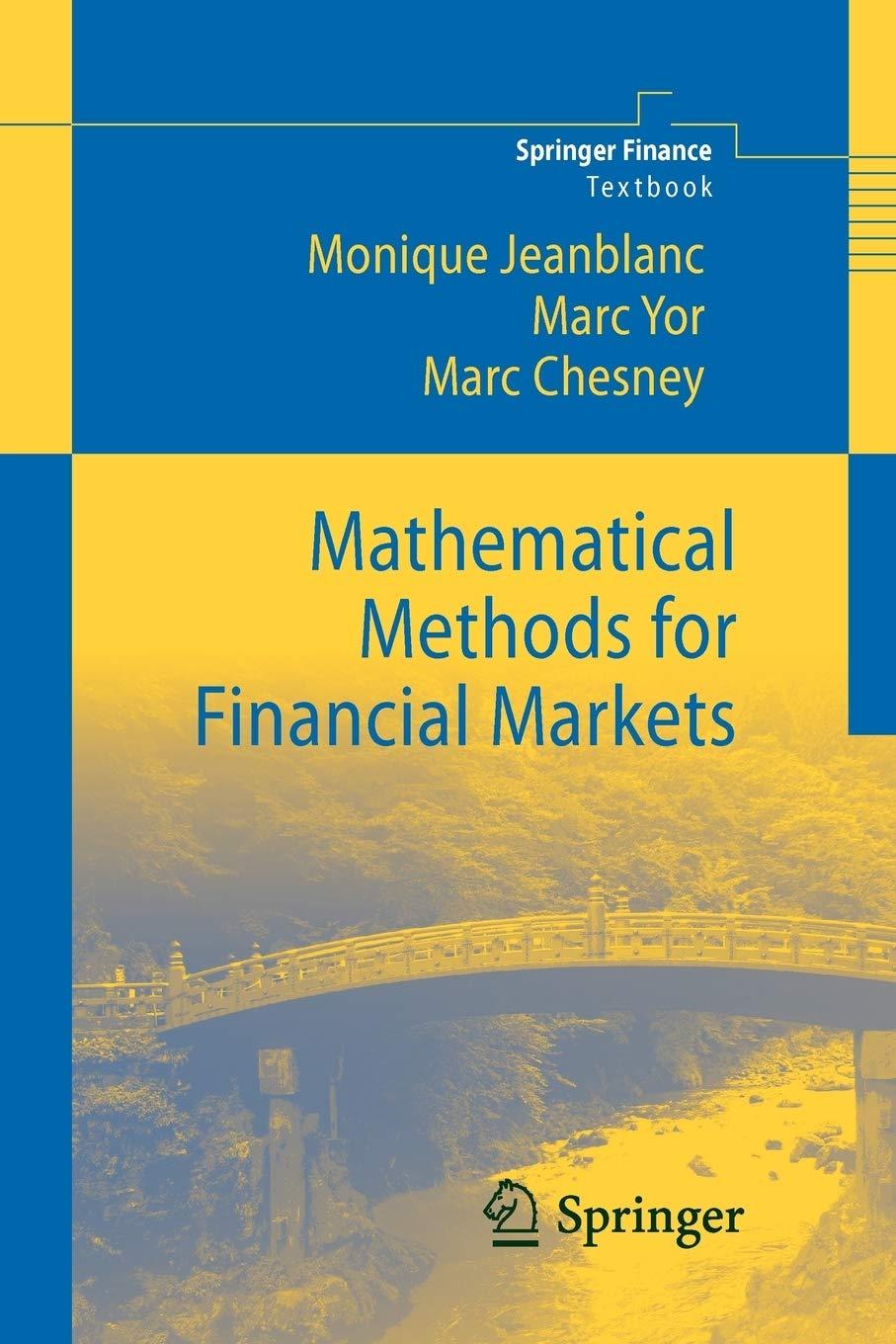Let (B^{(mu)}) be as defined in Exercice 1.5.3.9 and let (M^{(mu)}) be its running maximum. Prove that,
Question:
Let \(B^{(\mu)}\) be as defined in Exercice 1.5.3.9 and let \(M^{(\mu)}\) be its running maximum. Prove that, for \(t \[\mathbb{E}\left(M_{T}^{(\mu)} \mid \mathcal{F}_{t}\right)=M_{t}^{(\mu)}+\int_{M_{t}^{(\mu)}-B_{t}^{(\mu)}}^{\infty} G(T-t, u) d u\] Exercise 1.5.3.9: Let \(B_{t}^{(\mu)}:=B_{t}+\mu t\) be a BM with drift \(\mu\) and \(M^{(\mu)}\) its running maximum, i.e., \(M_{t}^{(\mu)}=\sup _{s \leq t} B_{s}^{(\mu)}\). Let \(R_{t}=M_{t}^{(\mu)}-B_{t}^{(\mu)}\) and \(T_{a}=T_{a}(R)=\inf \left\{t: R_{t} \geq a\right\}\).
where \(G(T-t, u)=\mathbb{P}\left(M_{T-t}^{(\mu)}>u\right)\).
Fantastic news! We've Found the answer you've been seeking!
Step by Step Answer:
Related Book For 

Mathematical Methods For Financial Markets
ISBN: 9781447125242
1st Edition
Authors: Monique Jeanblanc, Marc Yor, Marc Chesney
Question Posted:





